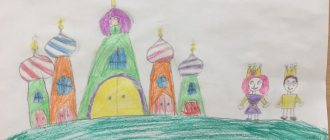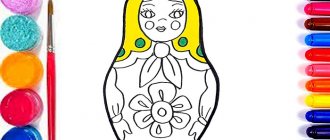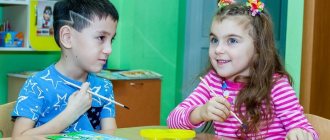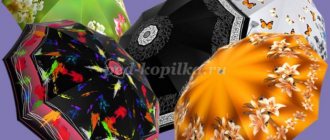Preparatory group. Senior preschool age. Children 6-7 years old
OD notes on speech development “Reading the Russian folk tale “The Snow Maiden” in the preparatory group OD notes on OO : “Speech development”
Reading the Russian folk
tale “The Snow Maiden”
.
Age group: preparatory to school. Goal: introducing children to the folk tale “The Snow Maiden”
and its image.
Program objectives: Educational: To develop the ability to holistically perceive a fairy tale ...
Synopsis of a quest game based on the fairy tales of A. S. Pushkin “Travel to Lukomorye” for children 6–7 years old Age of children: preparatory group (6-7 years old)
Participants of the quest game: children of two preparatory groups and parents. Goal: fostering interest in books and the reading process, developing cognitive activity, and the ability to work in a team. Objectives: summarize and systematize knowledge about...
Literacy lesson “Journey through a fairy tale”
Organization of correctional and developmental educational activities for children in the preparatory speech therapy group on the topic “Journey through a fairy tale.”
Purpose of the lesson:
- Systematize children's knowledge of literacy.
Tasks:
Educational:
- Consolidating knowledge about sounds, the ability to distinguish between vowels and consonants.
- Strengthening reading skills.
- Strengthening the skills of sound analysis and synthesis,
- Strengthening the ability to navigate words
- Development of the semantic side of speech.
Corrective:
- Development of fine motor skills of the hands, coordination of movements.
- Activation of visual tracking function.
Educational:
- Development of speech, attention, memory, creative imagination.
- Development of logical thinking.
Educators:
- Developing the ability to work collectively.
- Formation of social partnership, desire to act together with peers, enjoying joint activities.
Methods:
- Visual.
- Verbal.
- Practical.
- Game.
Techniques:
- Surprise and playful moments.
- Creating a problematic situation.
- Showing and viewing illustrations.
- Conversation.
- Artistic word.
Preliminary work:
- Reading the Russian folk tale “Geese and Swans”.
- Examination of illustrations based on the fairy tale.
- Corrective and developmental educational activities for teaching literacy.
Equipment:
Fairytale envelope with letter; subject pictures: geese-swans, apple tree, stove, river, boy, girl, flowers; stove layout; pies with letters; signal cards for determining the characteristics of sounds; artificial apple tree with apples; card diagrams for determining the place of a sound in a word; log pictures; text of the story "Apple Tree".
Progress of the lesson:
Introductory part.
— Guys, this morning the postman brought a telegram to the kindergarten. I wonder who it's from?
“It only contains one word: “Help!” and pictures are drawn: geese-swans, apple tree, river, stove, boy, girl. Apparently, whoever sent it doesn't know how to write.
- Guys, have you guessed which fairy tale hero is asking us for help? (children's answers)
— That’s right, Alyonushka from the fairy tale “Geese and Swans.”
Working with illustrations. Consolidation of spatial concepts. Development of coherent speech in children.
- Guys, how did you guess? (based on pictures from the telegram)
The pictures are located on flannelgraph.
- Let's remember this fairy tale, and the pictures will help us. (children take turns telling)
Main part.
- Guys, would you like to be in this fairy tale and help Alyonushka? Then let's go right now.
Phonetic rhythm. Consolidating knowledge about vowels and consonants.
- And here is the stove.
- Stove, stove, tell me, where did the geese-swans fly?
— The stove is silent and does not respond.
- Look, there is a pie in the oven, not a simple one, but with tasks. Let's complete them, then the stove will tell you where the geese and swans have flown.
Task No. 1.
- Take the letter pies out of the oven. Place pies with letters representing vowel sounds on a red tray. And on blue - pies with letters denoting consonant sounds. (children take turns coming up and completing tasks)
— Tell me, what sounds are called vowels? (children's answers)
-What other sounds are there? (consonants)
The speech therapist reads a poem.
These sounds are different vowels, consonants: The vowels are drawn to a ringing song, They can cry and scream, In the dark forest they can call and holler, And in the cradle they can lull Alenka. But they don’t want to whistle and grumble.
And the consonants have their own character: And the consonants agree to rustle, whisper, creak, even snort and hiss, but they don’t want to sing.
Strengthening the skills of sound analysis and synthesis.
Task No. 2.
— The stove has one more task. Determine what the first sound in a word is: vowel, consonant, hard consonant, soft consonant and choose a signal card of the desired color. (stork, cat, game, floor, bear, snail, lemon, whatnot, cake). Be careful, if someone makes a mistake, we will not be able to find Ivanushka.
Game "Let's help the apple tree." Consolidating the ability to form words from syllables.
— In front of us is an apple tree with unusual apples. And on the most beautiful apple there are tasks. Let's help the apple tree free itself from apples, complete the tasks, then she will tell us where to go next to look for Ivanushka.
Task No. 1.
- Read the syllables written on my apples. (children take turns picking apples and reading the syllables)
Task No. 2.
- Compose words from syllables, but first remember the rule: the number of vowels in a word, the number of syllables. (la, si, lam, lo, gu, pa, ta; moose, geese, shovel, lamp, strength)
Development of phonemic awareness, ability to correlate sounds and letters. Working with letter registers.
Task No. 3.
- And now the apple tree offers to play with its fallen apples. These apples are also not simple, they have pictures. I will convey the names of the pictures by sounds. And you, from the letters of the cut alphabet on the typesetting canvas, lay out words. (onion, taxi, cabbage)
Development of phonemic awareness, the ability to determine the place of sound in a word.
Task No. 4.
- Yablonka offers you another game - “Say a word.” You need to determine the place of the sound {P} in the completed words using the diagram cards.
“The foresters won’t want to take her home.” You can’t tell her, “Cat, scurry,” Because it’s...a trot.
- I took flour, I took cottage cheese. I baked a crumbly... pie.
- Who will color our album? Well, of course... a pencil.
- Where the sparrow dined. At the zoo with the... animals.
Finger gymnastics.
— We have a long road ahead. Let `s have some rest. Let's do finger exercises.
Consolidating the ability to compose sentences according to a diagram.
“The apple tree shows us the way forward.” He directs us to the river. A fish swims in the river. Let's catch her, maybe she can help us. The task is on the fish. The river asks us to build a bridge from the logs that lie on the bank. Each log has a picture attached to it. We will be able to put down the log only when we make a sentence based on the picture. (children take turns taking logs with pictures and making up a sentence, determining the number of words)
- So we built a bridge. Now you can cross the river. Walk carefully, try not to get your feet wet.
Development of phonemic hearing, the ability to distinguish by ear the sound composition of vowel sounds.
— We found ourselves in a clearing with flowers. Letters representing vowel sounds are written on the flowers. Choose your own flower. (alarming music sounds)
— Geese-swans are flying, take care of the flowers. Those who have flowers with vowel letters in their hands, which soften the consonants, hide in the green circle, and those who do not soften them, hide in the blue circle.
Final part.
Game "Visiting Baba Yaga."
Reading text.
- Now, we have already reached the house where Baba Yaga lives. Look, Ivanushka is sitting on a bench. Baba Yaga will only let Ivanushka go when we read the book. (children read the story “Apple Tree” in a chain)
- Now we can take Ivanushka.
- So we helped Alyonushka. Let's remember once again where we went and what we did. Know that friendship and knowledge will always defeat evil.
Literature:
- Alexandrova T.V. Live sounds, or phonetics for preschoolers
- Bondarenko T. M. Complex classes in the preparatory group of kindergarten"
- Mironova N.M. We develop phonemic awareness. Lesson plans for children of senior preschool age with speech disorders
- Natalia Nishcheva: Favorite fairy tales: Geese and swans. Summary of a lesson on teaching retelling to children 4-5 years old.
- Tkachenko T.A. Development of phonemic awareness and sound analysis skills.
Suslikova Larisa Stanislavovna, teacher-speech therapist 1st quarter. category, MBDOU "Lyambirsky kindergarten No. 3 combined type"
- Summary of subgroup speech therapy entertainment for children with FFDD and FND “Journey through the fairy tale Geese and Swans”
- Speech therapy session for children 5-6 years old with FFND in preparation for learning to read and write
- Summary of a lesson on teaching older preschoolers literacy “Journey to the city of Zvukograd”
- Lesson on preparation for teaching literacy, topic: Sound [K]
- Plan for a final lesson with preschoolers to prepare for literacy training
( 2 liked, average score: 5.00 out of 5)
Loading...






